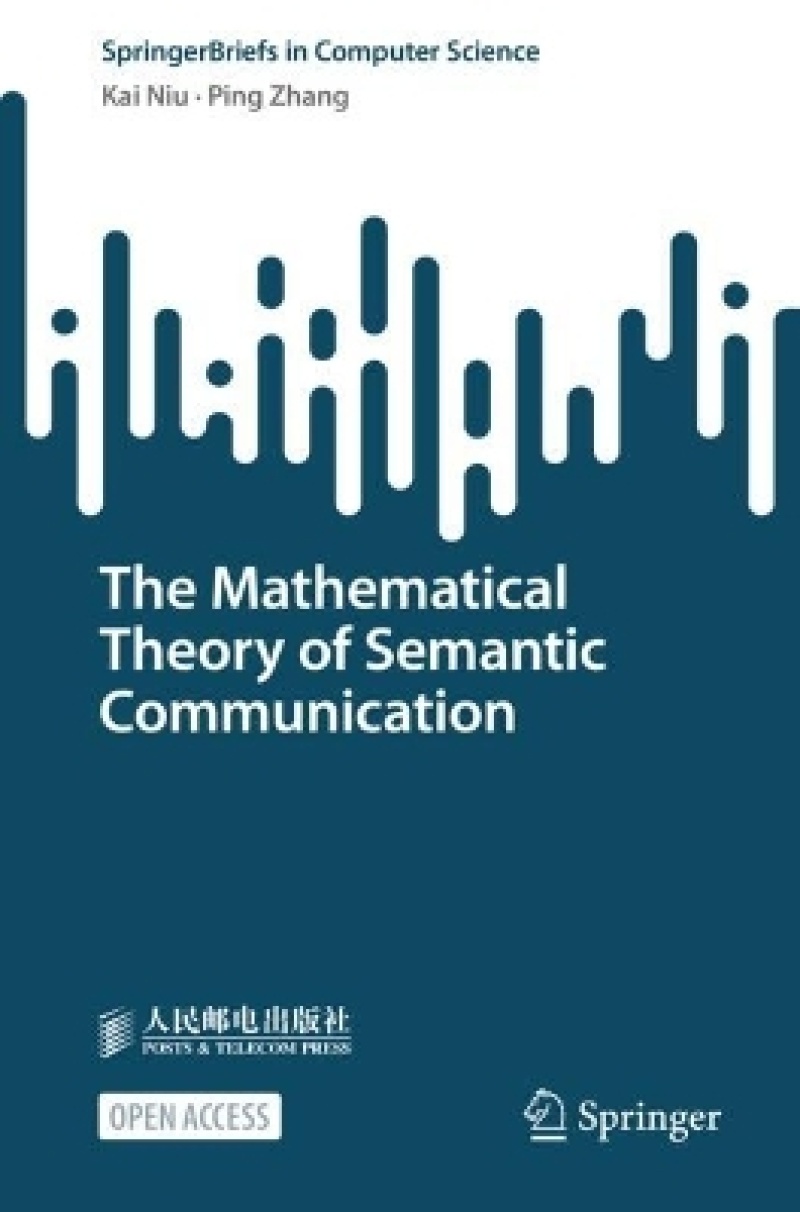This Open Access Book explores how classical information theory’s focus on syntactic information has limited the further development of communication science. Recently, communication technologies that handle and transmit semantic information have gained widespread attention in academia. Semantic communication has paved new directions for the future of communication technology development, yet it lacks a general mathematical guiding theory. To address this challenge, this open access book constructs a theoretical framework for semantic information theory and provides a systematic exposition of the measurement system for semantic information and the theoretical limits of semantic communication. It serves as a professional reference for researchers in information and communication. The book begins by deeply analyzing the data characteristics of various information sources and the needs of downstream tasks to summarize and generalize the universal attribute of semantic information—synonymity and to define the synonymous mapping between semantic information and syntactic information. Stemming from this core concept, synonymous mapping, this book introduces the measures of semantic information. It then introduces a new mathematical tool, Synonymous Asymptotic Equipartition (AEP), to explore the mathematical properties of synonymous typical sequences and applies random coding and synonymous typical sequence decoding/encoding to prove the semantic lossless source coding theorem, semantic channel coding theorem, and semantic limited distortion source coding theorem. In addition, the semantic information measures in the continuous case are discussed and a new channel capacity formula of the band-limited Gaussian channel is obtained, which is an important extension of the classical channel capacity.
The book is a valuable resource for researchers, academics, and professionals in the field of information and communication, particularly those interested in advancing the frontiers of semantic communication technology.
Chapter 1. Introduction.-Chapter 2. Semantic Communication System And Synonymous Mapping.-Chapter 3. Semantic Entropy.-Chapter 4. Semantic Relative Entropy And Mutual Information.-Chapter 5. Semantic Channel Capacity And Semantic Rate Distortion.-Chapter 6. Semantic Lossless Source Coding.-Chapter 7. Semantic Channel Coding.-Chapter 8. Semantic Lossy Source Coding.-Chapter 9. Semantic Information Measure Of Continuous Message.-Chapter 10. Semantic Joint Source Channel Coding.- Chapter 11 Conclusion.
This Open Access Book explores how classical information theory’s focus on syntactic information has limited the further development of communication science. Recently, communication technologies that handle and transmit semantic information have gained widespread attention in academia. Semantic communication has paved new directions for the future of communication technology development, yet it lacks a general mathematical guiding theory. To address this challenge, this open access book constructs a theoretical framework for semantic information theory and provides a systematic exposition of the measurement system for semantic information and the theoretical limits of semantic communication. It serves as a professional reference for researchers in information and communication. The book begins by deeply analyzing the data characteristics of various information sources and the needs of downstream tasks to summarize and generalize the universal attribute of semantic information—synonymity and to define the synonymous mapping between semantic information and syntactic information. Stemming from this core concept, synonymous mapping, this book introduces the measures of semantic information. It then introduces a new mathematical tool, Synonymous Asymptotic Equipartition (AEP), to explore the mathematical properties of synonymous typical sequences and applies random coding and synonymous typical sequence decoding/encoding to prove the semantic lossless source coding theorem, semantic channel coding theorem, and semantic limited distortion source coding theorem. In addition, the semantic information measures in the continuous case are discussed and a new channel capacity formula of the band-limited Gaussian channel is obtained, which is an important extension of the classical channel capacity.
The book is a valuable resource for researchers, academics, and professionals in the field of information and communication, particularly those interested in advancing the frontiers of semantic communication technology.
Produktdetaljer
Om bidragsyterne
Kai Niu received the B.S. degree in information engineering and the Ph.D. degree in signal and information processing from Beijing University of Posts and Telecommunications (BUPT), Beijing, China, in 1998 and 2003, respectively. He is currently a Professor of the School of Artificial Intelligence, BUPT. His research interests include information theory, coding theory, and semantic communication. He has published more than 200 academic papers, and proposed high performance construction algorithm of polar codes applied in 5G standard, and won the first prize of Natural Science of Science and Technology Award of the Chinese Institute of Electronics.
Ping Zhang is currently a Professor of the School of Information and Communication Engineering at Beijing University of Posts and Telecommunications, the director of State Key Laboratory of Networking and Switching Technology, a member of IMT-2020 (5G) Experts Panel, a member of Experts Panel for China’s 6G development. He served as Chief Scientist of National Basic Research Program (973 Program), an expert in Information Technology Division of National High-tech R&D program (863 Program), and a member of Consultant Committee on International Cooperation of National Natural Science Foundation of China. His research interests mainly focus on wireless communication. He is an Academician of the Chinese Academy of Engineering (CAE).

